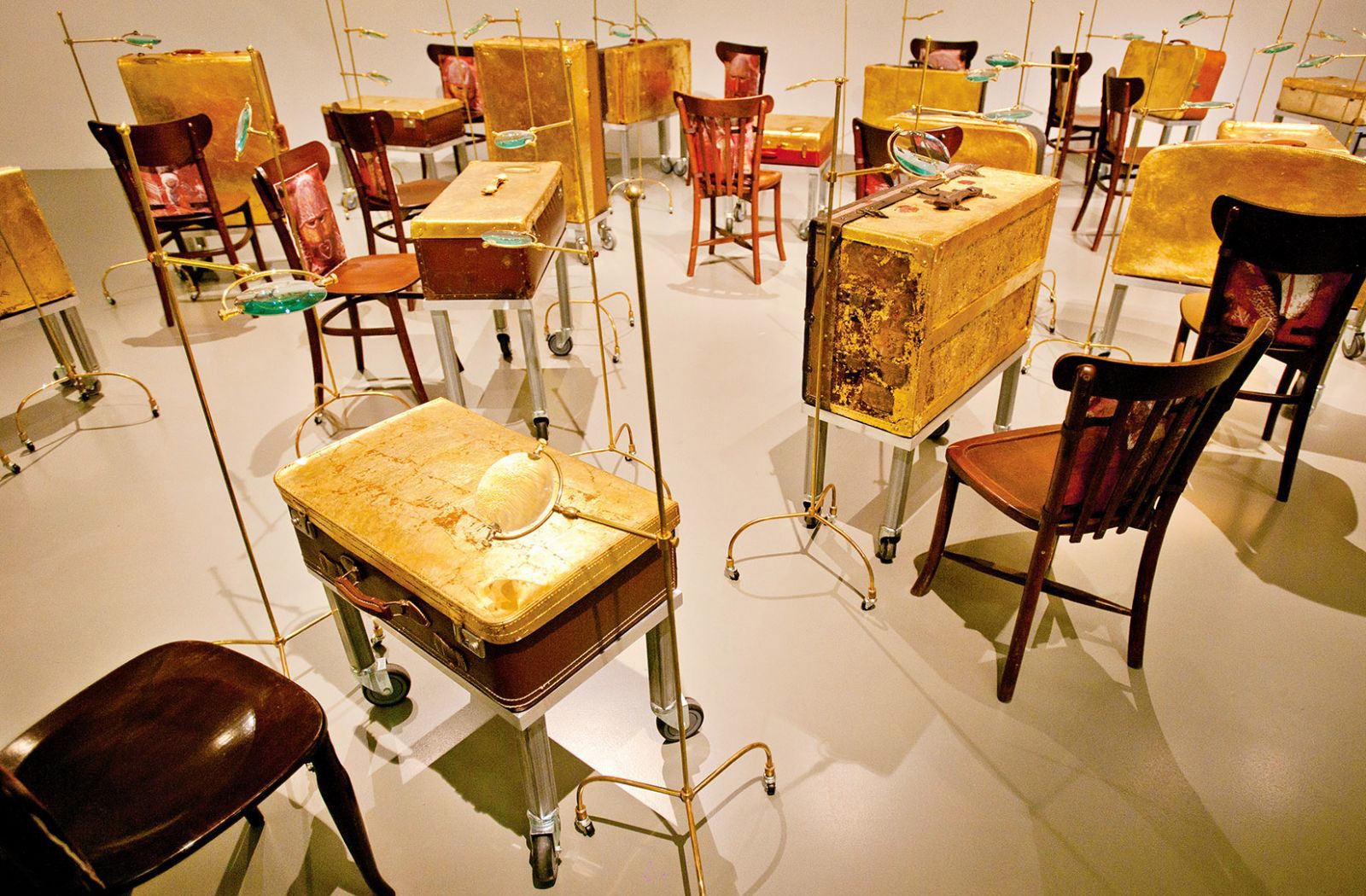- Open Today: 10.00–18.00
- Ticket
- Shop
- Membership
- TR EN

Handan Börüteçene, 1957
Bring Yourself To Me, 2009
Graduating in 1981 from the Istanbul State Academy of Fine Arts, Handan Börüteçene completed her art education at Paris’s Ecole Supérieure des Beaux-Arts in 1984. The archaeological digs she took part in while at the Academy have given her a keen sense of memory in such areas as cultural heritage and geography. Her works inspired by ancient history also contain references to contemporary popular culture and political developments.
Handan Börüteçene not only produces works which focus on space through references to the identity and past of the exhibition area, at times she also transforms the space itself into an art object. Just a glance away from the spectators, she creates installations of which they will be a part, and which they will experience personally. An example is “Bring Yourself to Me”, a work which the artist produced in 2009 and which has its roots in the historical identity of the building in Paris where it was displayed. The Palais de la Porte Dorée was originally built to exhibit art works collected from France’s colonies and later became the Museum of African and Oceanic Art. Since 2003 it has housed the National Museum of the History of Migration. The building has thus witnessed the political and social transformations of the postcolonial era, and harbors the memories of countless people and objects. In “Bring Yourself to Me” the artist places 19 portraits carved on a monolithic tree trunk from the village of Kurimbu in Papua New Guinea onto the museum’s Thonet chairs. Börüteçene brings together portraits from the collection of the Museum of African and Oceanic Art with suitcases from various countries and dating back to 1800 - 1960. In this regard, “Bring Yourself to Me” is a reference to the portraits, which were transported to the Quai Branly Museum in Paris, and takes its name from the longing caused by this removal. For the work to be completed, people are required to discover (with the aid of magnifying glasses) marks on the suitcases and to revive old memories in their minds. These people represent the nation’s new culture as enriched by immigration.
Installation
19 suitcases, 19 chairs and 30 magnifiers on wheels dted between 1890-1960
Dr. Nejat F. Eczacıbaşı Foundation Collection
Istanbul Museum of Modern Art / Long Term Loan